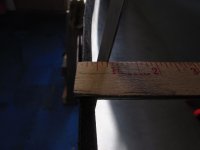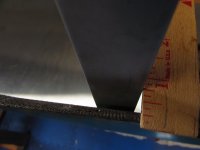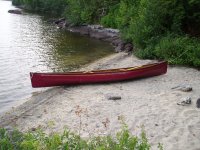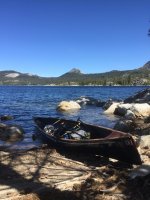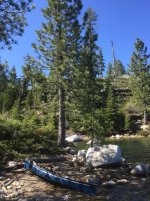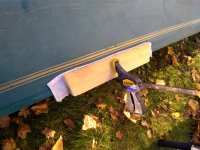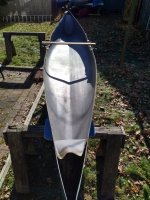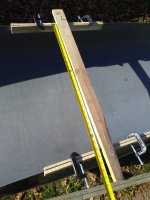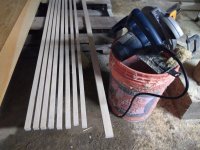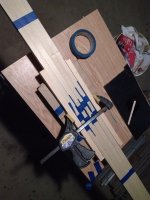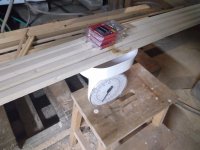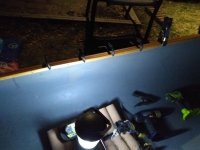So a while back I picked up a MR Traveler basically for free and after stripping the gunwales, seats and thwarts off I'm left with a puzzle. The shear line in the middle of the boat has an outside flare to it! Is that a design feature I ask as I scratch my head or something else? Never seen this before! So I start asking around to some of the boat builders out there and they all say the same that coming out of the mold it shouldn't be like this. So now I'm putting this out for some suggestions to all you more the well knowledged folks than me on how to deal with putting new gunwales on this old hull. The flare is about 112" on the right side of the boat and about 75" on the left side before going straight up to what I image is normal!
I taped a ruler vertical and then ran a yardstick across the hull to get a measurement seen in the pics. Going to use some old almost full length gunwales to see if I can pull them in some so they are flush on the top side if you follow me. Anyone have suggestions or seen this before? I have no desire to cut it off as was suggested to me, would like to keep this 31 year old hull true to its design.
dougd
I taped a ruler vertical and then ran a yardstick across the hull to get a measurement seen in the pics. Going to use some old almost full length gunwales to see if I can pull them in some so they are flush on the top side if you follow me. Anyone have suggestions or seen this before? I have no desire to cut it off as was suggested to me, would like to keep this 31 year old hull true to its design.
dougd

